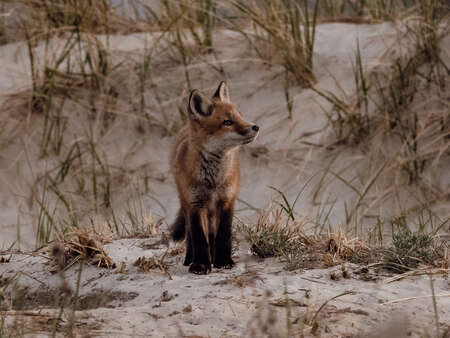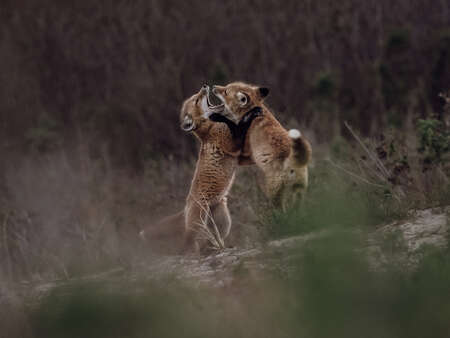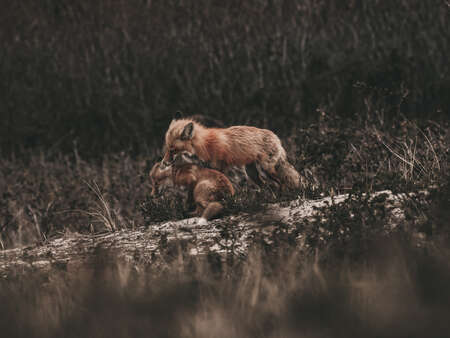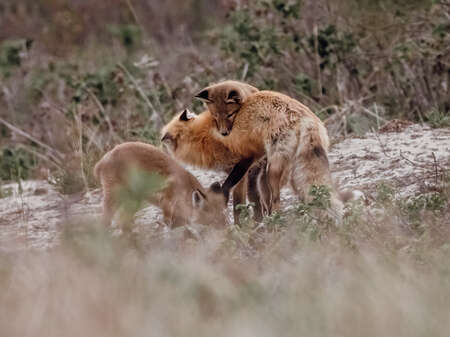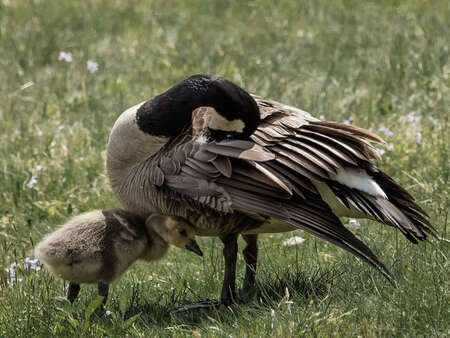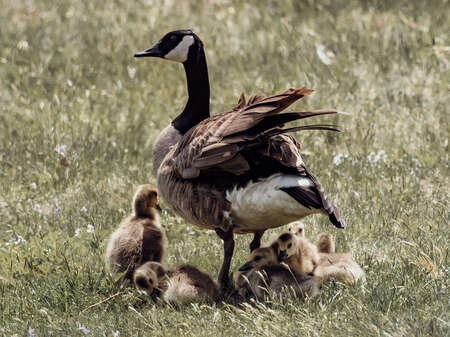I believe that we all have experiences in our lives that make an impact on us forever. Creating this series was one of those experiences for me.
I have always had a passion for wildlife, and having the opportunity to photograph them has been a goal of mine for a long time. Earlier this year, after purchasing the M.Zuiko 300mm F4.0 IS PRO to accompany my OM-D E-M1 Mark III, my chance to photograph these wild subjects from a respectful and safe distance had finally arrived.
PLANNING THE SERIES
Spring breathes new life into the world, and I knew that I wanted to do a series featuring some of Earth’s newest arrivals. My first task was to plan which subjects to photograph and to research their habits. Knowledge is power when working with wildlife; the more you know the safer it is for you and your subject. My next step was to get out in the field and capture the images.
The final step was to name the series. There was one shot of a fox pup wandering outside the den and the expression on its face was one of awe and wonder, which prompted the name “Little Explorers."
FOXES
Creating this series taught me a lot of patience. After weeks of failed attempts to find my subject, a fellow photographer brought me along with them to photograph a fox family in our area. When we arrived at the location, we waited almost two hours before we saw the vixen trot in front of us. She stopped to look in our direction, seeming completely unbothered by our presence, then off to her den with her catch. A short time later, the pups climbed out of the den and began jumping and playing – it was an amazing moment to witness.
That morning was my first try at photographing foxes, and while I was happy with my images, I had to make improvements to my technique. I learned that using Continuous Autofocus with tracking was going to be powerful when it came to capturing images of the pups. The AF with tracking function locks onto the subject and keeps it in focus as it moves around. I also quickly learned the image stabilization built into the lens and camera body is extremely important. Having the ability to photograph the pups’ quick movements without needing to use a tripod was huge. If I had needed a tripod, it would have been much more cumbersome to try and move around to capture the images.
I returned several times to visit this little family over the coming weeks to practice my technique. Sometimes they would be out playing for a couple of minutes, other times they would be out for over half an hour.
There were also times I waited for hours and never saw them – this is where patience came into play.
GOSLINGS
Foxes are not the only little ones to arrive in the early spring. Goslings, ducklings, and cygnets start hatching in April and May.
I wanted to add in one of these waterfowl families to this series – it just came down to which one I would be able to find. With my OM-D E-M1 Mark III fitted with the 300mm F4.0 IS PRO in hand, I drove around in search of hatchlings in our area. After a little while of searching I came across this Canadian Goose family by a small pond. I believe the goslings were only a couple of days old. They did not seem too interested in venturing into the water yet. Instead, they stayed on land, trying to hide under their mother. It was fun to watch them all run behind her and try to push their way in as she continued to walk away from them. Since this family was near the road, I was able to shoot from my car using it as a blind. This allowed the geese to remain unfazed and made it so that I could capture very natural moments.
KEY TAKEAWAYS
- Do research on subjects to learn their habits
- Do not be afraid to crop images
- Give wildlife space – there is no need to be right up close
- Be sure to watch their body language; if your presence is making them on edge, leave
- Properly expose as much as possible, even if that means boosting ISO
- Don’t share photos to social media right away
- Use the subject’s eyes as the focal point
FINAL OVERVIEW
The process of creating this series from the idea, to capturing the images, to finally putting it together was a beautiful learning experience. Not only did I learn a lot about my gear and its capabilities, but I also learned a lot about my wild subjects. It is important not only to do literary research when preparing to photograph wildlife but to also speak with other wildlife photographers and learn from their experiences.
I learned while photographing the foxes that it is okay to boost ISO and crop images. I learned with the goslings that using my car as a blind is perfectly acceptable. The greatest shots are going to be the ones where the gear is used efficiently and subjects are given the space to be wild. And, truly, the best images are the ones we are out capturing.
So, get out there, make memories, and have some fun!
Instagram: @nicolegeartyphotography
Nicole Gearty is a Maine based nature photographer. Nicole has always had a passion for the outdoors and hopes that her photos will encourage others to get outside and explore nature. Her subjects include but are not limited to landscape, wildlife, birds, and macro. When Nicole isn’t out exploring she is a full time mom and owner of a lifestyle and brand photography business.
